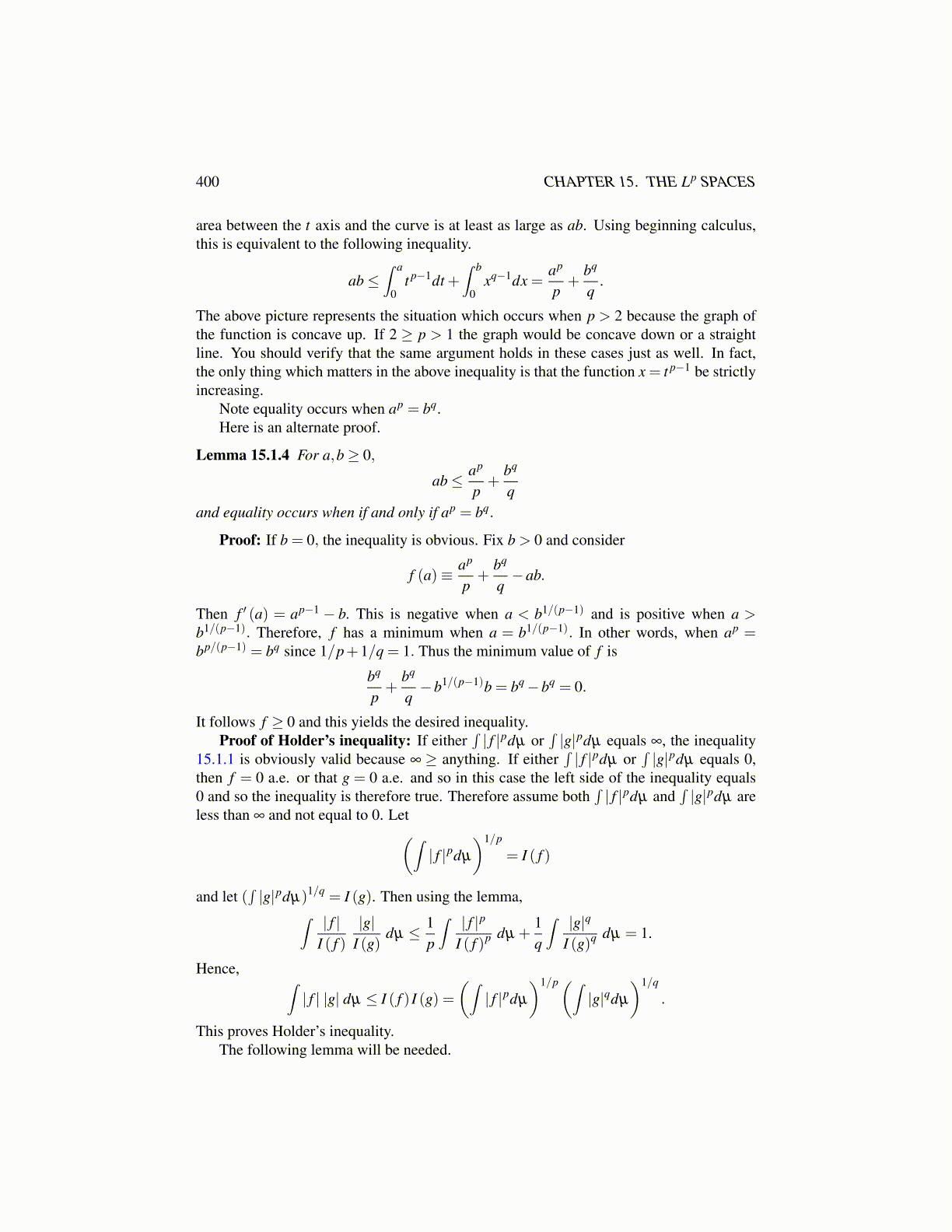
400 CHAPTER 15. THE Lp SPACES
area between the t axis and the curve is at least as large as ab. Using beginning calculus,this is equivalent to the following inequality.
ab≤∫ a
0t p−1dt +
∫ b
0xq−1dx =
ap
p+
bq
q.
The above picture represents the situation which occurs when p > 2 because the graph ofthe function is concave up. If 2 ≥ p > 1 the graph would be concave down or a straightline. You should verify that the same argument holds in these cases just as well. In fact,the only thing which matters in the above inequality is that the function x = t p−1 be strictlyincreasing.
Note equality occurs when ap = bq.Here is an alternate proof.
Lemma 15.1.4 For a,b≥ 0,
ab≤ ap
p+
bq
qand equality occurs when if and only if ap = bq.
Proof: If b = 0, the inequality is obvious. Fix b > 0 and consider
f (a)≡ ap
p+
bq
q−ab.
Then f ′ (a) = ap−1 − b. This is negative when a < b1/(p−1) and is positive when a >b1/(p−1). Therefore, f has a minimum when a = b1/(p−1). In other words, when ap =bp/(p−1) = bq since 1/p+1/q = 1. Thus the minimum value of f is
bq
p+
bq
q−b1/(p−1)b = bq−bq = 0.
It follows f ≥ 0 and this yields the desired inequality.Proof of Holder’s inequality: If either
∫| f |pdµ or
∫|g|pdµ equals ∞, the inequality
15.1.1 is obviously valid because ∞ ≥ anything. If either∫| f |pdµ or
∫|g|pdµ equals 0,
then f = 0 a.e. or that g = 0 a.e. and so in this case the left side of the inequality equals0 and so the inequality is therefore true. Therefore assume both
∫| f |pdµ and
∫|g|pdµ are
less than ∞ and not equal to 0. Let(∫| f |pdµ
)1/p
= I ( f )
and let (∫|g|pdµ)1/q = I (g). Then using the lemma,∫ | f |
I ( f )|g|
I (g)dµ ≤ 1
p
∫ | f |p
I ( f )p dµ +1q
∫ |g|q
I (g)q dµ = 1.
Hence, ∫| f | |g| dµ ≤ I ( f ) I (g) =
(∫| f |pdµ
)1/p(∫|g|qdµ
)1/q
.
This proves Holder’s inequality.The following lemma will be needed.